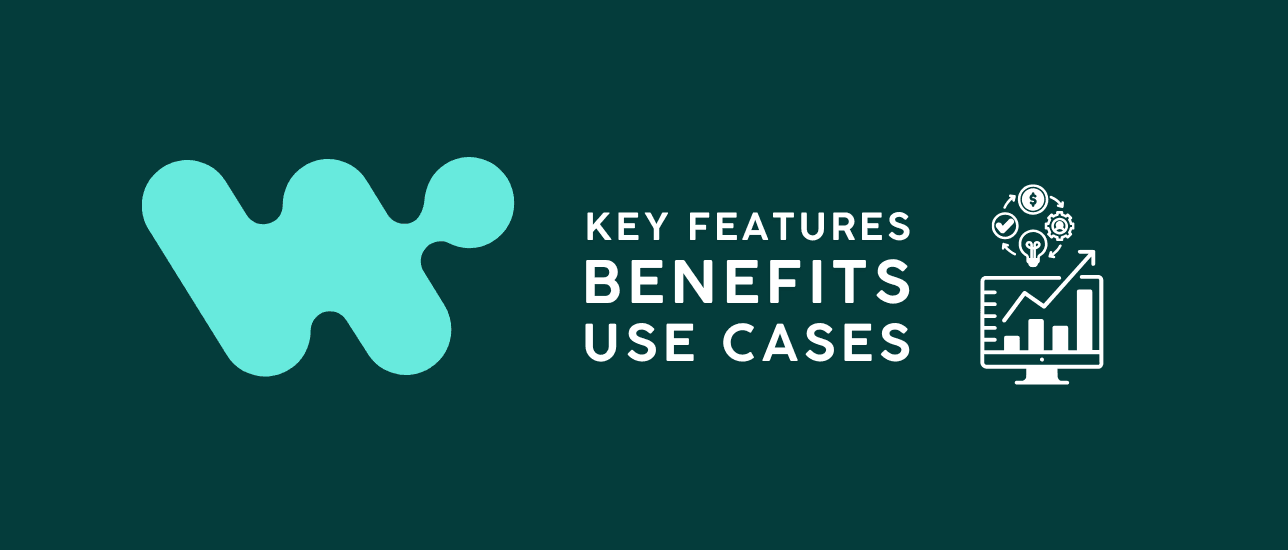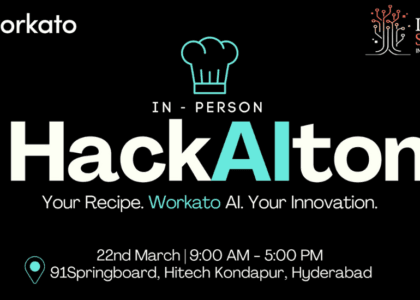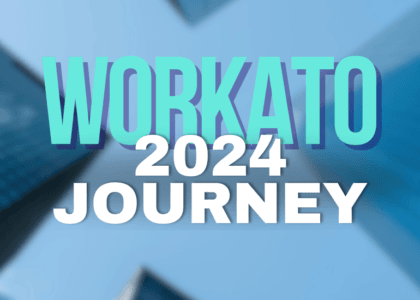It’s clear that businesses today can’t ignore digital transformation. It’s just how things are done now. This shift means having solid systems that can adapt, and that’s where integration platforms have become super important to keep everything running smoothly.
There are many platform choices available, but the article focuses on Workato, which is a cloud-based tool that handles integration and automation. This article aims to explain what Workato is all about, including how it operates, what makes it useful, how it’s applied in different industries, and how it’s affecting the future of business automation.
What is Workato?
Workato, often pronounced as “Work-ah-toh,” is not just an integration platform but an integration, automation, and orchestration platform for enterprises.
Origin and Founders
Established in 2013 by Vijay Tella, Gautham Viswanathan, and Harish Shetty. It was founded on the idea that business processes should be eased and quickened through automation. The experience the founders gathered in integration solutions at TIBCO Software and Oracle was used to design a platform which would dismantle barriers within the organization.
Workato Platform Overview
- Integrates: Connects to various applications, on premises systems, and cloud services in order to orchestrate and make workflows run smoothly.
- Automates: It handles complicated business processes automatically that could lead to saving from manual work and making things faster.
- Manages APIs: Tools to create, run, and publish APIs, to build a network of APIs.
- Integrates Data: It ensures that data mapped correctly, transformed, and synced in real time between different systems.
Key Features of Workato
Workato’s architecture is built with scalability, security, and agility at its core principles.
Multi-Tenant Architecture
Workato uses a shared model where multiple customers (tenants) share the hardware and software resources, with their data and configurations isolated from each other. This ensures security while maintaining flexibility.
Embedded Security
- Data Encryption: Data is encrypted both in transit and at rest.
- Access Control: Role-based access control (RBAC) for fine-grained permissions.
- Audit Trails: Comprehensive logging for tracking changes and ensuring governance.
Connectors and Recipes
- Connectors: Over 1,000 Pre-built integrations with SaaS apps like Salesforce, NetSuite, Google Suite, and thousands more. These connectors reduce complexity by handling the API intricacies.
- Recipes: A “recipe” in Workato is a visual representation of an integration workflow, which can be built, tested, and deployed without coding.
Enterprise-grade Integration
Workato offers features like:
- Complex Orchestration: Ability to manage complex workflows across multiple applications.
- Event-driven Architecture: Trigger workflows based on real-time events.
- Error Handling: Robust error management capabilities to ensure smooth operations.
The Genie: A Paradigm Shift in AI-driven Automation
At the heart of Workato’s innovative offerings is Workato Genie. This AI-powered feature sets Workato apart by:
- Proactive Suggestions: Genie learns from your integration patterns and system behaviors to suggest automations, thus preempting typical integration challenges.
- Predictive Analytics: By analyzing historical data, Genie predicts potential issues before they arise, allowing for pre-emptive automation.
- Enhanced User Experience: It leverages machine learning to provide personalized recommendations, making the platform not just a tool, but a collaborative partner in automation.
- Customization: Workato empowers users to create their own connectors. Genie can assist in understanding system nuances, making custom integration a breeze with predictive suggestions based on historical integration flows.

How Workato Works
Understanding the operational essence of Workato involves looking at its workflow:
Integration Process
- Define Data Flow: Identify what data needs to be integrated, from where to where.
- Configure Connectors: Use Workato’s vast library of connectors or APIs.
- Map and Transform Data: Define how data should be mapped and transformed between systems.
- Set Triggers and Actions: Determine when and what actions should occur.
- Deploy and Monitor: Deploy the integration workflow and continuously monitor for performance and issues.
Automation and Orchestration
Workato’s automation goes beyond simple integrations:
- Workflow Automation: Automate business processes by connecting disparate systems.
- AI-powered Automation: Introduce AI to enhance automation capabilities, like natural language processing for better user interaction.
API-Led Connectivity
Workato encourages an API-first approach:
- API Management: Create, manage, and expose APIs for your applications.
- Microservices Architecture: Facilitates the development of microservices, enhancing modularity and scalability.
Benefits of Using Workato
Efficiency Gains
Automating routine tasks isn’t just about convenience; it’s about substantial cost reduction and productivity enhancement.
Scalability
Workato grows with your business, accommodating new applications and handling increased workloads seamlessly.
Empowerment
Business users can create automations, turning the platform into a springboard for innovation and enhancing problem-solving capabilities.
Accelerated Innovation
By automating the mundane, companies can allocate resources to foster innovation, with Genie’s insights providing a unique competitive advantage.
Real-World Use Cases
HR and Recruitment
- Onboarding: Automate the onboarding process with personalized workflows and predictive analytics for a smooth transition.
- HR Workflow: Streamline recruitment from application tracking to employee onboarding.
Sales and Marketing
- Lead Management: Automate lead collection, scoring, and nurturing with personalized marketing campaigns.
- Customer Data Synchronization: Keep customer data up-to-date across all systems for a unified view.
Finance and Accounting
- Financial Transactions: Enhance transaction management with error prevention and real-time reconciliation.
- Budgeting and Forecasting: Genie can predict financial trends, aiding in strategic decision-making.
IT Operations
- System Monitoring: Predict system failures or performance issues, allowing for proactive maintenance.
- Service Desk Automation: Automate ticket resolution and incident management workflows.
Workato in the Future
AI and Machine Learning
Workato is enhancing its platform with AI to predict and suggest automation opportunities, provide insights, and improve system reliability.
Internet of Things (IoT)
As IoT devices proliferate, Workato’s ability to manage complex workflows positions it well for IoT integration and orchestration.
Strategic Partnerships
Workato continues to form strategic partnerships with leading tech companies, expanding its ecosystem and ensuring its services remain relevant.
Global Expansion
With a growing global customer base, Workato is poised to offer more region-specific features, addressing compliance and local language requirements.
Workato’s journey from a startup to a leader in the iPaaS (Integration Platform as a Service) space exemplifies how a platform can evolve to meet the ever-changing demands of enterprise integration.
Its no-code/low-code approach democratizes automation, making it accessible to businesses of all sizes. As businesses continue to embrace digital transformation, Workato stands as a beacon guiding enterprises toward a future where processes are seamless, data flows freely, and human effort is reserved for truly strategic tasks.
This comprehensive overview of Workato not only showcases its capabilities but also frames the platform within the broader context of business evolution, the adoption of new technologies, and the continuous pursuit of operational excellence in the digital age.






